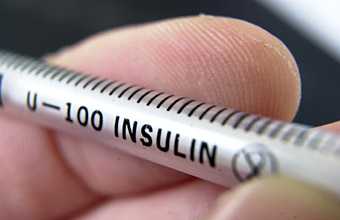DIABETES Beware of this SILENT ASSASSIN

Have you ever heard of pre-diabetes condition? You are not the only one. Many people have this dangerous condition that leads to full-blown diabetes and don’t even know it. Could you be one of them? Read on to find out
You may have heard about the signs of diabetes – you are thirsty all the time, feel exhausted and/or are constantly running to the bathroom. Many people, including seemingly healthy women, have abnormally high blood sugar (glucose) levels but don’t know it. The signs can be subtle, or absent altogether, which makes the problem go undetected and this increases the risk of heart disease and other serious health problems. Being overweight or obese increase your risks of diabetes and its precursor, pre-diabetes.
There are two types of diabetes: type 1, in which the pancreas does not produce enough insulin (a hormone that helps regulate blood sugar) and this type is usually an inherited condition; and type 2, a far more common condition that develops over time in which the body cannot use insulin effectively to maintain normal blood-sugar levels. More worrying is that many people have pre-diabetes, in which a person’s blood-sugar levels are higher than normal, but not quite high enough to be classified as diabetes.
Research shows that the majority of people with pre-diabetes develop type 2 diabetes within 10 years. Pre-diabetes itself carries a 50 per cent increased risk of cardiovascular disease. Yet, because it does not cause any symptoms, most people who have it are blissfully unaware of the danger.
Six simple steps to lowering risk…
There is a lot you can do to lower your risk of developing both pre-diabetes and type 2 diabetes. Research points out that many cases of diabetes could be prevented through lifestyle changes. Here are six steps than can greatly reduce your odds.
1. Lose excess weight. Extra body fat prevents insulin from working properly in the body, thereby laying the ground work for type 2 diabetes – sometimes as early as childhood. In fact, being overweight or obese is the biggest risk factor for type 2 diabetes. Fat around the abdomen seems worse than fat spread in other parts of the body such as thighs and arms. The fat that is stored within the abdominal cavity gets broken down into fatty acids, which are released more easily into the bloodstream and interfere with the way insulin works.
2. Swap carbohydrates. You should cut back on your overall intake of refined carbohydrates such as cakes, biscuits, white flour and white rice because they raise blood sugar, which can make you eat more. Instead, increase the amount of fibre-rich whole grains, fruits, nuts, legumes and vegetables. Research shows that a high intake of dietary fibre increases the body’s ability to respond and use insulin, and may help prevent type 2 diabetes. Ensure to get at least 25 grams of fibre each day from a variety of foods.
3. Cut back on fat. Particularly harmful are saturated fats, cholesterol and trans fatty acids because they can all increase insulin resistance, which means the body does not use insulin efficiently. The better sources of fat are the polyunsaturated or monounsaturated fats found in seafood and vegetable oils respectively. They are associated with a lower risk of developing diabetes. Even if you trade bad fats for good ones, keep an eye on your overall intake as fats are fattening. Total fat intake from all sources should be around 25-30 per cent of your daily calorie intake.
4. Exercise regularly. Research suggests that 30-40 minutes of brisk walking five times a week can decrease your risk of diabetes by up to 40 per cent. If you add weight bearing exercises and weight loss to the equation, your risk drops even further. Exercise works very well to decrease insulin resistance. If you exercise a muscle, this will cause the muscle to take sugar out of the bloodstream and use it, which causes blood-sugar levels to decline. The lower your blood sugar levels, the lower your risk of heart disease.
5. Watch your alcohol intake. Among healthy women, moderate drinking (defined as a glass and a half of wine per day) may reduce the risk of developing type 2 diabetes. More than that, however, appears to increase the risk in slim women, though not those who are overweight. It is therefore recommended not to overindulge in alcohol. If you drink, have food with your alcohol. Abstain if you are starting medication for diabetes or pre-diabetes, or if you have a strong family history of diabetes.
6. Have your blood-sugar levels tested. Fasting blood sugar (a measure of your blood-sugar level after you have not eaten for eight to 12 hours) is considered normal if below 100 milligrams per deciliter (mg/dl), but a person with pre-diabetes has a fasting blood-sugar level of between 100 and 125 mg/dl, and women with full fledged diabetes have blood sugar measuring 126 mg/dl or above. If you have pre-diabetes, you need to know so you can take steps to prevent full-blown diabetes. The pre-diabetic condition can be reversed with medication and lifestyle change and people can be back to normal blood-sugar status. But once you get diabetes, reversing it is a lot harder.
What’s your risk of DIABETES?
You are at greater risk if you have one or more of the following risk factors:
A family history of diabetes, especially a close relative (parent or sibling, for example) with type 2 diabetes.
Low HDL (good) cholesterol levels.
High triglycerides (harmful fats in the blood).
High blood pressure.
History of gestational diabetes or giving birth to a baby weighing more than nine pounds.
High-risk ethnic descent (Hispanic, African, Asian, from the Pacific).
Published March 2015




